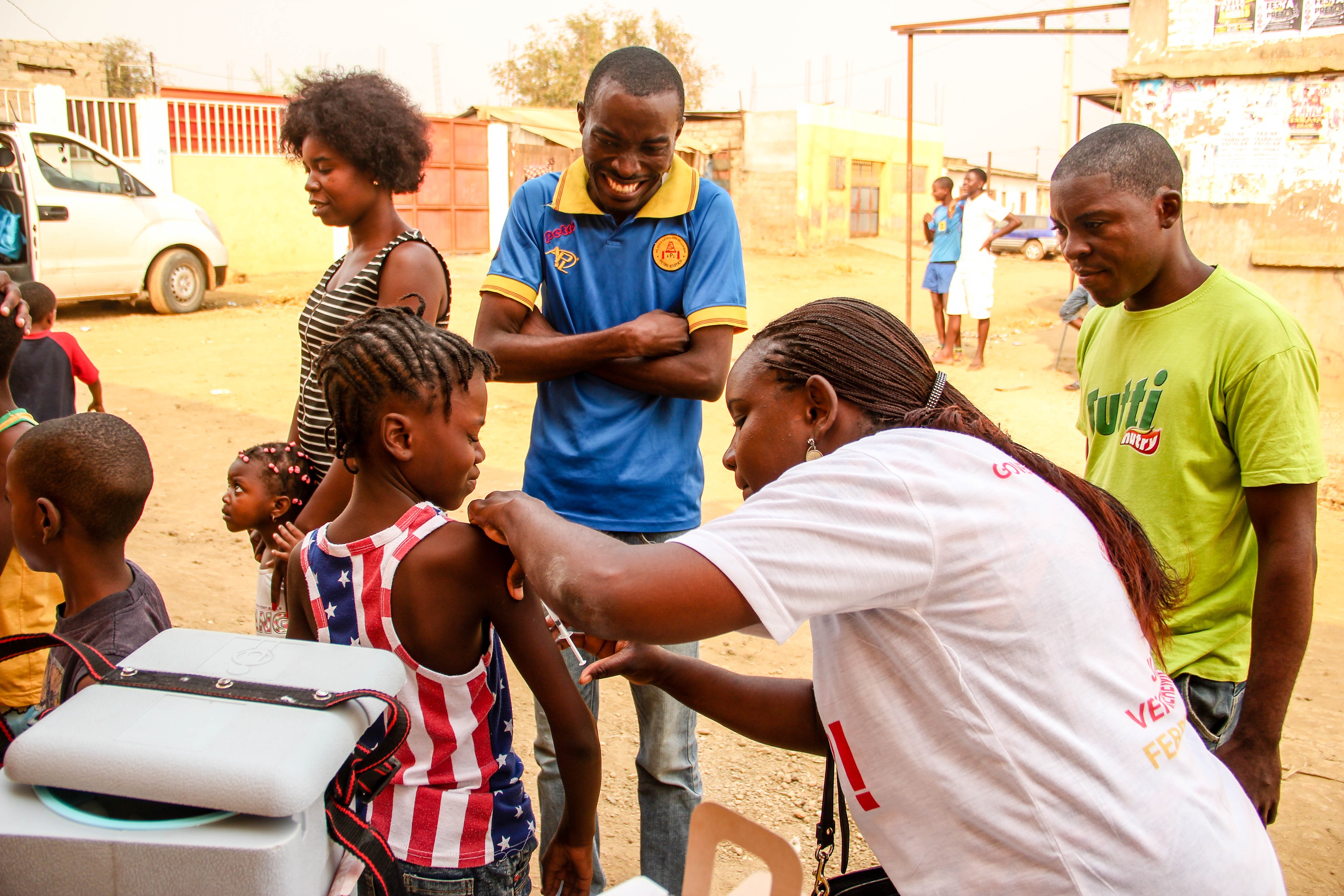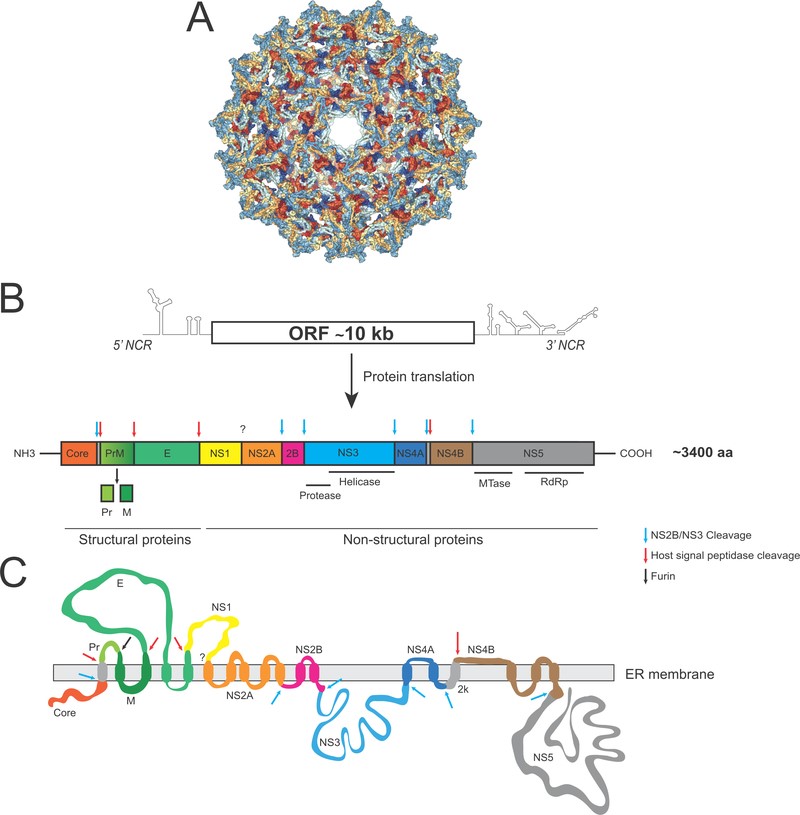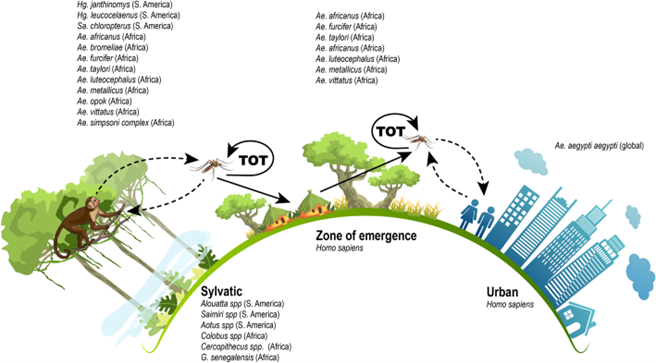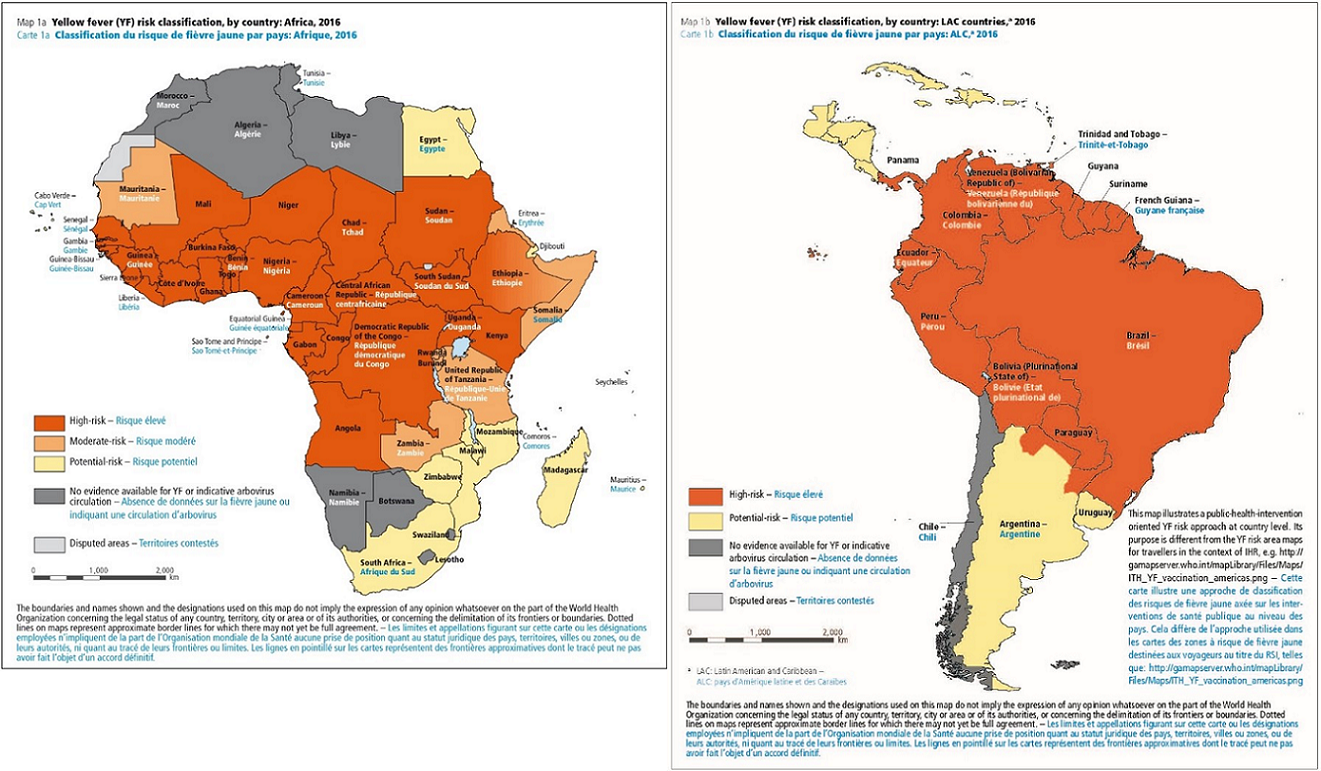What is Yellow Fever and what causes it?
 Yellow fever is an acute haemorrhagic disease caused by an RNA virus which is carried and transmitted by the bites of infected mosquitoes. Direct human-to-human transmission does not occur; however, mosquitoes (vectors) can transmit the virus directly from an infected person to an uninfected person. YF virus is a member of the genus Flavivirus which includes West Nile, dengue and Zika viruses.
Yellow fever is an acute haemorrhagic disease caused by an RNA virus which is carried and transmitted by the bites of infected mosquitoes. Direct human-to-human transmission does not occur; however, mosquitoes (vectors) can transmit the virus directly from an infected person to an uninfected person. YF virus is a member of the genus Flavivirus which includes West Nile, dengue and Zika viruses.
Further details on YF virus and transmission
Yellow fever (YF) virus is the prototype member of the genus Flavivirus, which consists of approximately 70 medically important viruses, including dengue, West Nile, Japanese encephalitis, and Zika viruses. YF virus is a small, spherical virion with icosahedral symmetry, approximately 50 nm in diameter, comprised of viral envelope and membrane proteins embedded in a host cell-derived lipid bilayer, which surrounds a nucleocapsid core shown in the figure below. The positive-sense, single-stranded RNA genome, approximately 11 kb in length, is packaged in the nucleocapsid. Serological diagnostic assays target the antibodies elicited against the virus envelope. YF virus loses infectivity outside the host; however, in mosquito eggs, which are resistant to desiccation, the virus can survive and be maintained for long periods.

Figure. YF and translation and processing of the polyprotein. Abbreviations: C, capsid; E, envelope; prM/M, premembrane/membrane; NCR, noncoding region; NS, nonstructural. Source: Douam F, Ploss A. Yellow Fever Virus: Knowledge Gaps Impeding the Fight Against an Old Foe. Trends Microbiol. 2018 Nov;26(11):913-928.
YF virus is maintained in nature by transmission between female blood-feeding mosquitoes and primates (human and non-human), and by transovarial transmission in the mosquito vectors (see the figure below). Viremic hosts subsequently transmit the virus to naïve mosquitoes that feed on them. After an incubation period in the mosquito, during which the virus replicates, the mosquito can transfer the virus to a new host while taking a blood meal. Mosquitoes are infective for life and pass on the virus to their eggs. YF virus can also persist inside infected mosquito eggs laid in breeding sites that become dry, such as used tires and discarded pots.
The virus is transmitted in both forest (sylvatic) and urban cycles. In Africa, there is also an intermediate zone between forest and savannah that is an important transitional zone for transmission to humans.

Figure. YF virus transmission cycles. Abbreviation: TOT, transovarial transmission. From Emerg Top Life Sci Volume 4 Issue 4 2020 411-422 10.1042/ETLS20200187.
- Sylvatic YF virus transmission. In tropical rainforests, YF virus circulates between non-human primates and tree-top canopy mosquitoes (i.e. Haemagogus spp. in South America and Aedes africanus in Africa). Humans become infected when they enter the forest and are bitten by mosquitos carrying the YF virus.
- Urban YF virus transmission. Large outbreaks can occur when infected humans introduce the virus into densely populated areas with a large non-immune population and a high density of an urban vector such as Aedes aegypti mosquitoes.
- Intermediate YF virus transmission. Small-scale epidemics, which occur in savannah areas located on edge of forested areas in humid or semi-humid parts of Africa are believed to be the most common form of transmission in Africa. Aedes spp. mosquitoes, which breed in the wild and around households, infect both non-human primates and humans.
YF virus has also been found to be transmitted to humans by exposure to infected blood and aerosols in the laboratory and perinatally to newborns (i.e., around the time of birth).
Why is it called “yellow” fever?
YF virus causes jaundice in some patients that makes their skin and eyes appear yellow.
Where is YF found?
YF is currently found in tropical and subtropical countries in Africa (34) and the Americas (13). These are known as YF-endemic countries. Historically, it was also found in North America and Europe.

Figure: Yellow fever virus geographical distribution in (A) Africa and (B) South America. Source: WHO Weekly Epidemiological Record, No 16, 21 April 2017, available here: https://apps.who.int/iris/rest/bitstreams/1082866/retrieve
How many human cases are caused by YF?
A modelling study based on African data sources estimated the burden of YF during 2013 was 84,000–170,000 severe cases and 29,000–60,000 deaths. However, disease incidence is difficult to assess, as probably, only 1%–2% of cases are reported.
How long after a being bitten by an infected mosquito do symptoms occur?
Approximately 3-7 days.
What are the symptoms of YF?
Many infections produce no symptoms. In those that do, early symptoms include sudden onset of fever, chills, headache, back and muscle aches, nausea and vomiting, which may last 3-4 days.
Can YF infection be fatal?
Yes. In 5-25% of persons that develop clinical symptoms, a short remission is followed by severe symptoms. These include jaundice, impaired kidney function, heart instability and haemorrhage. Approx. 30-60% of severe cases are fatal in 7-10 days of the initial symptoms.
Can severe YF be treated or cured?
YF can only be treated with supportive hospital care, including fluids and prevention of liver and kidney failure. Supportive treatment reduces the likelihood of death. There is no specific therapy with anti-viral drugs.
How is YF diagnosed?
Diagnosis of YF is not always easy, especially when an active outbreak has not already been identified. A combination of clinical symptoms, epidemiological information, and laboratory test results are used to diagnose the disease. The experience of the physician is also important. YF laboratory diagnosis is based on molecular (RT-PCR) and antibody (ELISA, neutralization test) methods.
Is an infected person protected from future infections?
Yes, YF infection is protective for life.
Who is at risk of a YF infection?
Anyone residing in YF-endemic regions, and travellers to those regions. Potentially, non-endemic countries to where infected travellers return that have mosquitoes capable of transmitting YF virus.
Is there a vaccine for YF?
Yes. A safe and highly effective vaccine is available for YF. It requires a single dose and is protective for life.
Who should take the YF vaccine and where can it be obtained?
Anyone at risk of contracting YF should consider taking the vaccine including laboratorians. Where to obtain it is country dependent. Mass vaccination campaigns reach many people in countries where YF is endemic. Decision-making for vaccine allocation is based on risk, country engagement, feasibility and strategic considerations. The EYE strategy has made significant headway toward vaccination of as many people in endemic regions as possible, and to improving the global supply of YF vaccine. Travelers to endemic countries can be vaccinated at licensed clinics in their home countries, and some countries require it for entry.
Latest news on YF outbreaks
- Worldwide : (https://www.who.int/emergencies/disease-outbreak-news)
- The Americas : https://www.paho.org/en/topics/yellow-fever
- Africa : https://www.afro.who.int/health-topics/disease-outbreaks/outbreaks-and-other-emergencies-updates
- YELLOW FEVER: Number of Confirmed Cases and Deaths in Endemic Countries of the Americas, 1960-2021 : https://ais.paho.org/phip/viz/ed_yellowfever.asp
- Promed reports : (enter yellow AND fever into keyword field and enter date range of interest) : https://promedmail.org/promed-posts/
